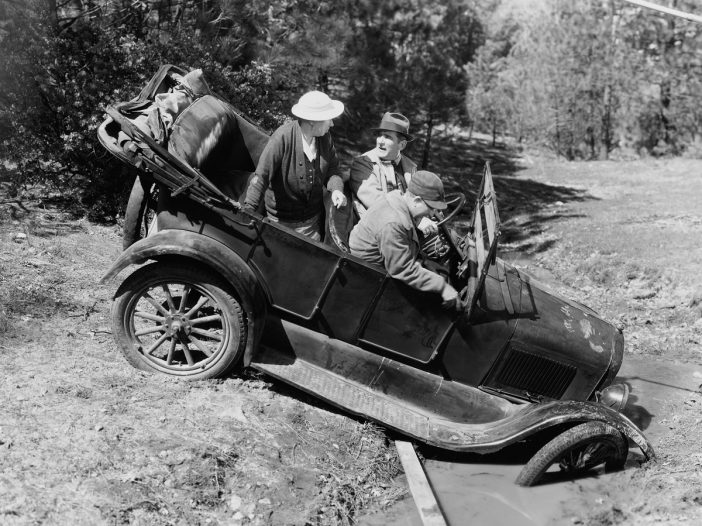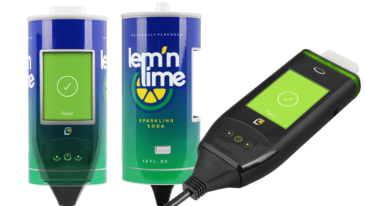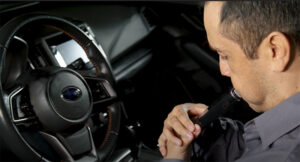
When cars were first in the limelight, there wasn’t much in the form of traffic laws and safety. Change happened on a national scale much in the way it often does. First, societal demand for legislation came about because of the increasing consequences of both alcohol and cars being available. For legislation to keep up, technology and new law enforcement techniques had to improve. Each affected the other until the modern DUI laws we have today were created. From reporting drunk behaviors to now enforcing the use of a car breathalyzer for DUI convictions, history has changed greatly for DUI laws.
You’ve probably heard the basics of DUI laws: No driving if your BAC exceeds 0.08; this proves double if you’re under the legal drinking age. But our regulations weren’t always so stringent. The question then is how did we get here? When did DUI laws start?
Quick Overview of DUI History
Alcohol has been around far longer than cars have. So, it’s not unreasonable to say DUIs began with the inception of the commercial car. However, the problem started small. For the first 30 to 40 years of commercial cars being available, not many US citizens could afford them. It wasn’t until prices went down, supply went up, and roads became filled with these combustion engines, that DUIs really started to turn heads.
Only then did the first campaigns launch against driving while under the influence. This history is easier to grasp when it’s split into a few different timelines.
- Prehistory through the ‘30s
- Invention of the Breathalyzer through the ‘70s
- MADD, SADD, and other organizations for change
- Modern-day DUI laws
These are the major periods where DUI laws updated and shaped into the more mainstream laws we have today.
Pre-History of DUI
In 1906, New Jersey became the first state to enact a law against driving while intoxicated but failed to determine exactly how a test would be administered. Officers were required to report conduct that insinuated alcohol intoxication. These could be physical behaviors like stumbling, or auditory behaviors like slurring. Unfortunately, there was no standard prevailing determinant.
Other states followed New Jersey’s lead, and as vehicles became more ubiquitous, the need for stringent alcohol laws proved necessary.
With this came the need for technology to identify blood alcohol content within people. Not only this, but it was needed in both a reasonable time and location because alcohol’s effects wear down by the hour. This technology wasn’t available widespread until much later. (The modern breathalyzer, for example, wasn’t created until the ‘50s.)
World War I and Prohibition
Two adjacent histories were intertwined with the earliest DUI laws. The first involved the later months of 1918 when World War I finally came to an end and the rise of manufacturing met the American consumer. The second involved the eighteenth amendment or prohibition.
- Aftermath of World War I – The explosion of manufactured goods meant higher standards of living for the average American. This continued up until the collapse into the Great Depression. With these manufactured goods came the mass inculcation of motorized vehicles. Cars, cars, cars. Everybody had cars, but nobody had much to say about traffic or safety. And that included alcohol.
- Enter Prohibition – In 1920, the amendment to ban the sale of all alcoholic substances nationwide went into effect. This didn’t stop those from wanting to drink to find underground bars, nor did it stop the act of driving while intoxicated. Now it was less likely to find information on the dangers of drinking while driving because alcohol was assumed to be nonexistent.
The importance to take away from this period was how the average American was getting on the road without stringent guidelines of safety and regulation. This couldn’t change until the twenty-first amendment repealed prohibition in 1933. By this point, however, America’s culture around alcohol had dramatically changed.
Effect on DUI Laws
In 1934, the year after prohibition ended, cities saw a staggering rise in drunken driving deaths. In both Chicago and Los Angeles, their numbers quadrupled just months after the amendment was repealed. This frightened health officials who then urged for modern technologies to be developed to aid in the detection and prevention of alcohol-related driving incidents.
Rise of the Drunkometer
The health officials’ cries were heard. In 1931, Rolla Harger invented a new device that could detect a certain level of intoxication on someone’s breath. A subject would blow into a balloon which would then be mixed with a chemical solution. Depending on the change of colors, it would be matched against a color schematic to determine how intoxicated someone was. This breath test became known as the Drunkometer.
The Drunkometer had a subjective component, and the device itself was bulky and hard to use. Was it the most practical test? Not really. But did it have a catchy, marketable name? Absolutely!
The invention stuck in the public’s eye after its first use in a trial case where Harger was called to testify. It wasn’t overtaken until the mid-1950s with the invention of the Breathalyzer.
The Breathalyzer
In 1954, a colleague of Harger created a device that improved upon Harger’s ideas. Robert Borkenstein called his invention the Breathalyzer, and it was a significant improvement upon the Drunkometer. The Breathalyzer was:
- More efficient
- Smaller
- Cheaper
- Simpler
- More portable
Because of this, the device became the new gold standard in DUI technology. And it stuck. Over the years, the breathalyzer was improved upon, and it’s still around today. Only, now it has shrunk to less than a tenth of its original size and can be as simple as a little toy on a keychain.
The First Nationwide BAC
By this time, most states had adopted a policy that stated the legal limit to be 0.15% blood alcohol content. By today’s standards, this is a significantly high level to be driving at and can even be considered part of an enhanced penalty BAC level. However, back then, it was the first instance of a legal limit.
Vehicles for Change
There was little change in DUI laws apart from technological advancements once states accepted the BAC limit. That is until the ‘80s when a thirteen-year-old girl’s death by an intoxicated driver provoked a national organization to rise for change. That organization was Mothers Against Drunk Driving or MADD.
Throughout the ‘80s, ‘90s, and into the early 2000s, organizations popped up to change the legislation around drunk driving laws they determined to be too lenient. These organizations for legislative and social change include:
- MADD – Mothers Against Drunk Driving
- SADD – Students Against Destructive Decisions
- DFDD – Doctors for Designated Drivers
MADD
The mother of the young girl killed by a drunk driver, Candace Lightner, founded MADD and led the organization to its first landmark legislative victory in 1984 with the raising of the national drinking age to 21. States who did not raise their legal drinking age had funding reduced, and by 1988 all states played along.
The organization still exists today and campaigns their message through several avenues.
- Education – MADD still exists on campuses and combines effort with national organizations like the NFL and Nationwide to educate high schoolers on the importance of avoiding alcohol and the dangers of driving while intoxicated.
- Prevention – MADD works with law enforcement to increase sobriety checkpoints and crackdowns on impaired driving. Also, they support the usage of ignition interlock devices to prevent drivers from getting on the road when they are already intoxicated.
- Invention – By supporting future technologies like automated vehicles and alcohol detection systems, MADD pushes for a safer community with less drunk driving.
MADD has been a serious player in changing culture and legislature surrounding DUI laws. But they weren’t the only ones.
SADD and DFDD
Students Against Destructive Decisions (formerly “Drunk Driving”) is an organization of middle school, high school, and college students who educate peers against underage drinking. Founded in 1981, soon after MADD, SADD focused more heavily on preventing alcohol-related accidents for minors.
A lesser-known organization, Doctors for Designated Drivers, is a group of doctors who are trying to change the culture surrounding drinking. They work with sports arenas, bars, and other venues to provide “compensatory drinks” for the designated drivers.
Modern DUI Laws
Starting around 1982, Congress encouraged states to adopt more stringent driving while impaired laws. Working in conjunction with MADD, the National Highway Traffic Safety Administration brought legislative change to the BAC legal limit, reducing it from 0.15 to 0.08.
By 2004, every state had adopted what’s known as the “Per Se” Laws which designate the BAC legal limit for driving at 0.08%, Delaware being the final state. The last call to action came when the federal government threatened to reduce highway funding each year until the state complied.
The meaning of the per se laws is by itself laws. Which means, having a BAC of 0.08 by itself is enough to be guilty of a DUI. It was in this manner that the modern DUI laws we know today started to emerge.
Possible Reduction to 0.05 BAC
There has been substantial debate around lowering the BAC limit of per se laws down to 0.05. In December of 2018, Utah became the first state to impose such legislation. They’re not the first state to try, though. New York, Hawaii, Delaware, and Washington have all proposed legislation, but it never passed.
The debate has been between two opposing sides.
- Those in favor of 0.05 – National Highway Traffic Safety Administration and other health organizations have been pleading for years that 0.08 is still too high. At this level of BAC, drivers are still seriously impaired, and most people don’t recognize it. By reducing the BAC legal limit, lives will be saved.
- Those who oppose 0.05 – The hospitality industry and small businesses argue that this will discourage tourists and other patrons from having a couple of beers with their meal. Because a 0.05 BAC can be achieved with a single beer in some cases, they argue this will scare off people from ordering them at all.
The argument that affected the final decision was showing how there was a ten percent reduction in alcohol-related driving fatalities when the BAC legal limit dropped from 0.10 to 0.08. Proponents hope Utah will be a good test case to show how decreasing the legal limit will make roads safer. Overall, the BAC limit debate is very important given that it also is a determinant in how long your license will be suspended if you get a DUI.
The Ignition Interlock Device
A modern-day DUI-related device is an ignition interlock device. This device hooks up to your vehicle’s engine and determines whether or not the car will start. It does so by acting as a breathalyzer and determining if someone is sober and fine to drive with a simple breath test. A court could require this in cases of DUIs for those on probation.
Some have pushed for IIDs to be more widespread for those who have a history of alcohol-related incidents and for those who don’t. By having preventive features in place, there would be safer streets from DUI offenders. Installing car breathalyzers are a common court-mandated enforcement that happens when you get a DUI.
DUI Laws Extend Beyond the Road
Now, it’s not just drivers who have to be careful about drinking while operating their vehicle. While not all laws are as strict as the ones for the road, boating and flying are two notable exceptions. For deaths related to recreational boating, alcohol-related incidents have been one of the highest contributors.
Similar laws have popped up everywhere. DUIs are possible for all the following:
- Kayaking
- Canoeing
- Biking
- Horse-back riding
- Buggy driving
Future of DUIs
While history can often show a depressingly slow change in legislation, the future does look bright. Designated drivers are becoming less needed as more ride-sharing and taxi services come about. Automated cars are starting to emerge. Soon, there won’t be a need to worry about DUIs and the safety of those on the road will be out of our hands.
Conclusion
Until then, the dialogue between alcohol-related researchers and legislatures needs to continue. DUIs and DUI-related accidents are as prevalent as they are preventable. Their history tracks back to the first boom in commercial cars in the 19th century. It’s been a constant struggle back and forth between lobbying organizations, researchers, and elected officials to bring down the legal BAC limit and to implement fair and stringent laws.
Until the day comes when they are no longer needed, DUI laws will need to continually be updated and improved in order to contribute to public safety of all drivers.
Sources:
Supreme Court Opinion. Birchfield v North Dakota. https://www.supremecourt.gov/opinions/15pdf/14-1468_8n59.pdf
New York Times. Rolla N. Harger Dies; Invented Drunkometer. https://www.nytimes.com/1983/08/10/obituaries/rolla-n-harger-dies-invented-drunkometer.html
NCSL. Increased Penalties for High Blood Alcohol Content. http://www.ncsl.org/research/transportation/increased-penalties-for-high-blood-alcohol-content.aspx
MADD, The Solution. https://www.madd.org/the-solution/
NHTSA. History Introduction. https://one.nhtsa.gov/people/injury/research/pub/alcohol-laws/08history/1_introduction.htm
Pew. Tough New DUI Law Brings Controversy. https://www.pewtrusts.org/en/research-and-analysis/blogs/stateline/2018/10/19/tough-new-dui-law-brings-controversy


